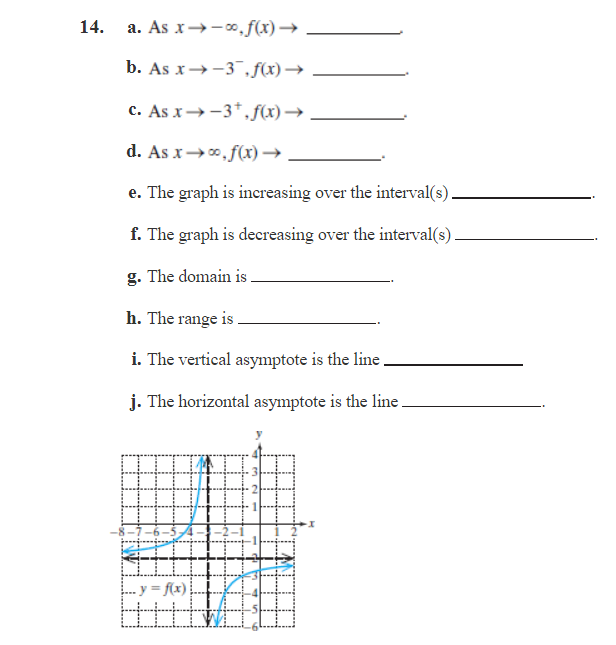14. a. As x→-0,f(x)→ b. As x→-3.fx)→ c. As x→-3*,f(x)→ d. As x→0, f(x) → e. The graph is increasing over the interval(s). f. The graph is decreasing over the interval(s). g. The domain is . h. The range is . i. The vertical asynmptote is the line . j. The horizontal asymptote is the line. - y = f(x)} ম
14. a. As x→-0,f(x)→ b. As x→-3.fx)→ c. As x→-3*,f(x)→ d. As x→0, f(x) → e. The graph is increasing over the interval(s). f. The graph is decreasing over the interval(s). g. The domain is . h. The range is . i. The vertical asynmptote is the line . j. The horizontal asymptote is the line. - y = f(x)} ম
Chapter3: Functions
Section3.3: Rates Of Change And Behavior Of Graphs
Problem 2SE: If a functionfis increasing on (a,b) and decreasing on (b,c) , then what can be said about the local...
Related questions
Question

Transcribed Image Text:14.
a. As x→-0,f(x)→
b. As x→-3.fx)→
c. As x→-3*,f(x)→
d. As x→0, f(x) →
e. The graph is increasing over the interval(s).
f. The graph is decreasing over the interval(s).
g. The domain is .
h. The range is .
i. The vertical asynmptote is the line .
j. The horizontal asymptote is the line.
- y = f(x)}
ম
Expert Solution
This question has been solved!
Explore an expertly crafted, step-by-step solution for a thorough understanding of key concepts.
This is a popular solution!
Trending now
This is a popular solution!
Step by step
Solved in 3 steps with 9 images

Recommended textbooks for you

